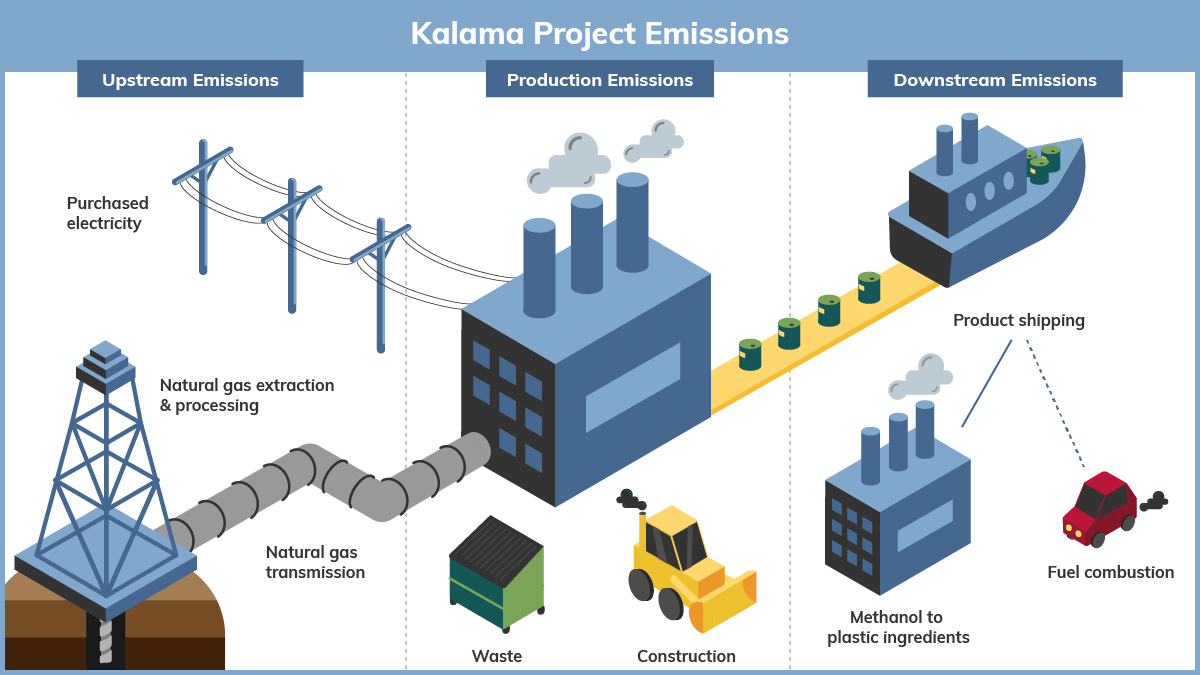
Today, the Washington Department of Ecology denied a shoreline conditional use permit for a proposed methanol facility in Kalama. This proposal has been the subject of intense interest and controversy, both because of its potential effect on the local economy and due to its potential environmental impacts. As Ecology’s director, I want to do my best to explain Ecology’s reasons for denying the permit and the analysis that led to that decision. Ecology Director Laura Watson
Before Ecology can approve a conditional use permit, the project applicant must show that its proposal is consistent with the policies of Washington’s Shoreline Management Act, that the proposal would cause no significant adverse effects to the shoreline environment, and that the public interest would not be substantially and detrimentally affected if the permit is approved.
Even before Ecology made its final decision on the Kalama shoreline permit, the biggest question — and the biggest source of controversy — has been how to measure the greenhouse gas emissions tied to the proposed facility, and whether those emissions can be effectively mitigated.
“Emissions” for this project include a range of activities, not just what might come out of smokestacks on the banks of the Columbia River: There are also “upstream” emissions from extracting and pumping natural gas, and “downstream” emissions from shipping the refined methanol overseas and using it in plastics production or as a fuel.
The greenhouse gas emissions from the Kalama facility itself would be significant: It would be one of the largest sources of carbon emissions in Washington, annually producing about 1 million metric tons of carbon dioxide equivalent. When you look at those “upstream” and “downstream” emissions, however, the total impact jumps to 4.8 million metric tons a year. By way of comparison, only one emissions source in Washington produces more than that — a power plant in Centralia that is required by law to stop burning coal by 2025.
While the majority of the Kalama project’s emissions would happen outside the state of Washington, the law does not allow us to simply ignore the environmental impacts of those emissions. Washington’s State Environmental Policy Act (SEPA) requires permitting agencies to prevent “a decline in the quality of the world environment.” Moreover, both the Washington Shorelines Hearings Board and Cowlitz County Superior Court found that for a project like the Kalama proposal, we must fully evaluate all the related greenhouse gas emissions prior to approving permits.
Why do SEPA and the courts require agencies to go to these lengths? Because Washington’s shorelines and coasts, rivers and streams, snowpack and reservoirs, are all at serious risk from climate change, and greenhouse gases, like those produced from fossil fuel use, are driving those changes.
The project’s sponsor, Northwest Innovation Works, has offered to mitigate all of the facility’s in-state emissions — roughly a fifth of the total emissions associated with the project. It did not, however, guarantee that all of the mitigation would occur within the state of Washington.
That’s a key consideration because, in 2020, the Washington Legislature set new greenhouse gas emissions limits that require the state to cut emissions 45% over the next nine years and 95% over the next 30 years, reaching net-zero emissions by 2050. That means that there is a total of 5 million metric tons of emissions available for every single thing that happens in Washington in 2050 — and all of those emissions must be offset. This single project, if built, would account for one-fifth of that total carbon budget.
Clearly, under SEPA and the greenhouse gas law, the Kalama proposal represents an environmental impact that is incompatible with the state’s own emissions limits.
It’s not quite that straightforward, however. Even though the Kalama facility, if approved, would undoubtedly increase global greenhouse gas emissions, a market analysis completed under SEPA shows that it could initially increase emissions at a lower rate than other sources of methanol that depend on dirtier fuels, like coal. This has led some project advocates to claim that the project would actually cause an environmental benefit. I want to be clear that a project that would increase greenhouse gas emissions by nearly 5 million tons annually would not benefit the environment. At most, this project may be less harmful than potential alternatives.
Also troubling is the uncertainty of basing such a decision on the future behavior of something as unpredictable as a commodity market in fossil fuels and the policy decisions foreign governments may make that influence those markets. At the end of the day, we know with certainty that this proposal would result in significant new greenhouse gas emissions. We do not know with certainty how environmental and economic policy decisions around the globe may impact the overall methanol market and rate of emissions.
We are then left with a difficult decision: Do we approve a facility we know will be bad for Washington’s environment and make it difficult or impossible for our state to meet its statutory emissions limits based on the potential for some alternate scenario to be even worse?
Ecology is a state regulatory agency. It is not our place to set industrial policy or to pick winners or losers. Our job is to apply Washington’s environmental laws fully and impartially. Likewise, as scientists, we fervently believe that greenhouse gas emissions need to be reduced sharply. But as state regulators, our ability to reduce those emissions is determined by the authority delegated to us by law.
Viewed through this lens, I believe we were left with no other choice than to deny the permit for the Kalama project. The known and verifiable emissions from the facility would be extremely large and their effects on Washington’s environment would be significant and detrimental. These impacts fail to meet the standard set for permit approval under the Shoreline Management Act and Cowlitz County’s Shoreline Master Program.
I want to emphasize that this was a difficult decision, and we did not make it lightly. As a state agency, Ecology has a responsibility to protect Washington’s environment, but that includes a responsibility to support environmentally responsible economic development. Unfortunately, in our final analysis, the Kalama methanol project did not meet that threshold. Ecology is committed to working with the communities of Southwest Washington — and with communities across Washington — to permit projects that meet our state’s requirements.
- Laura Watson, Ecology Director



